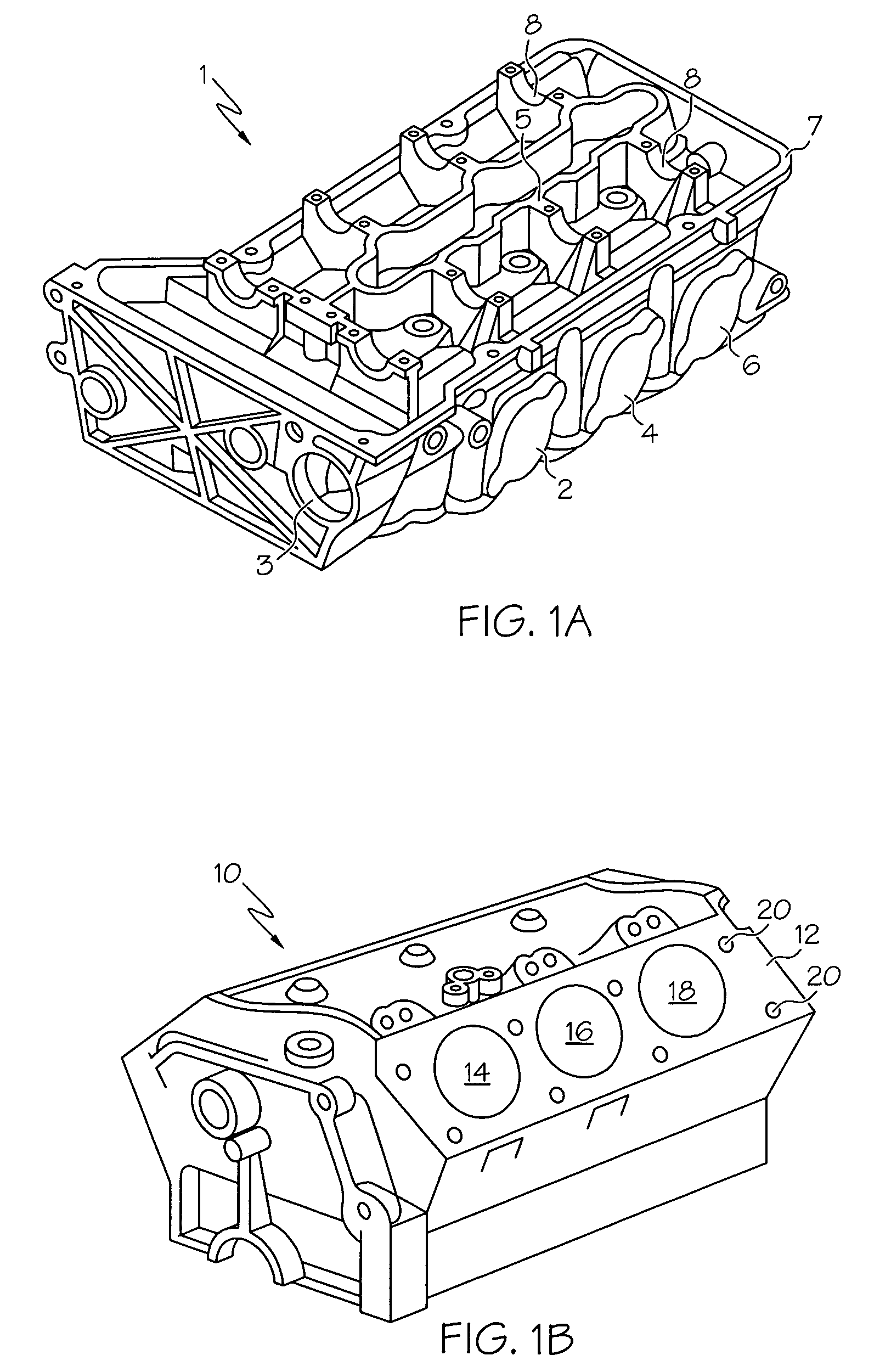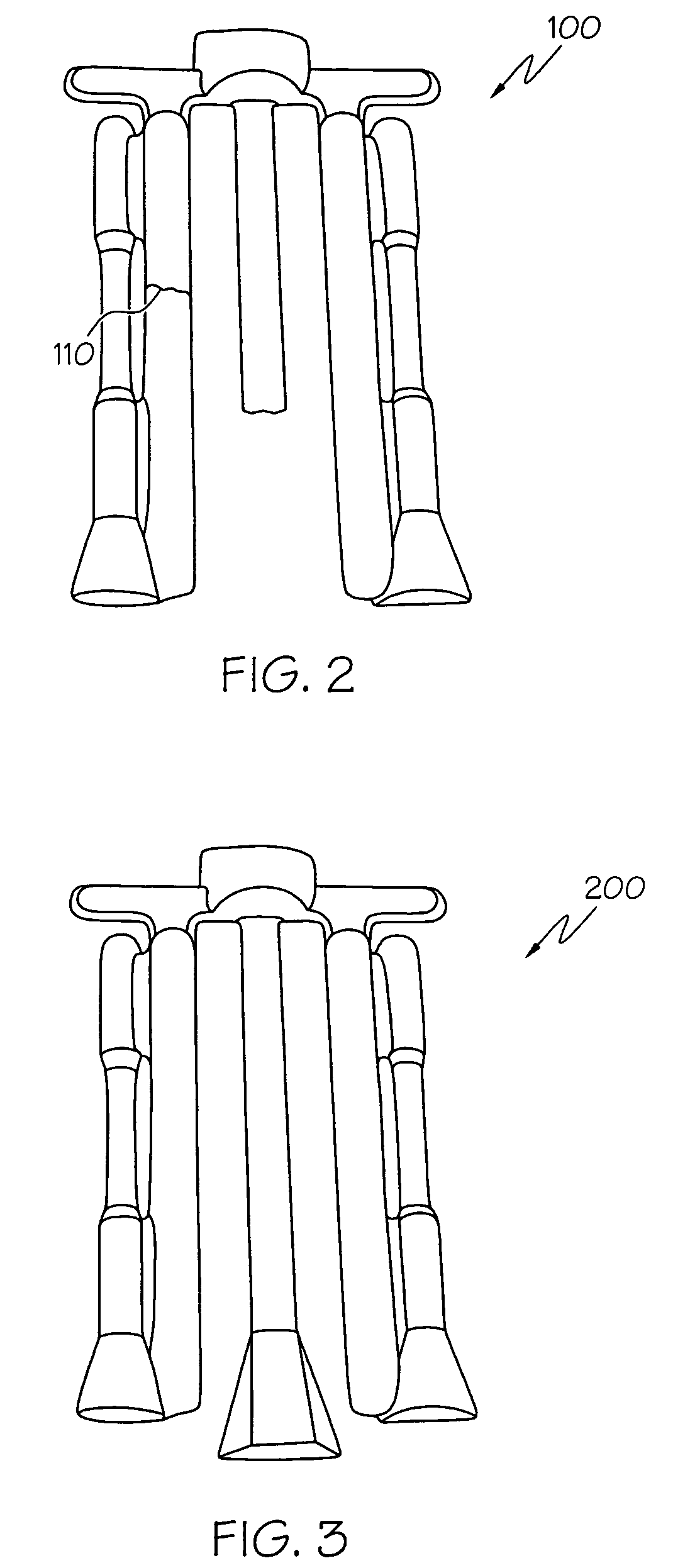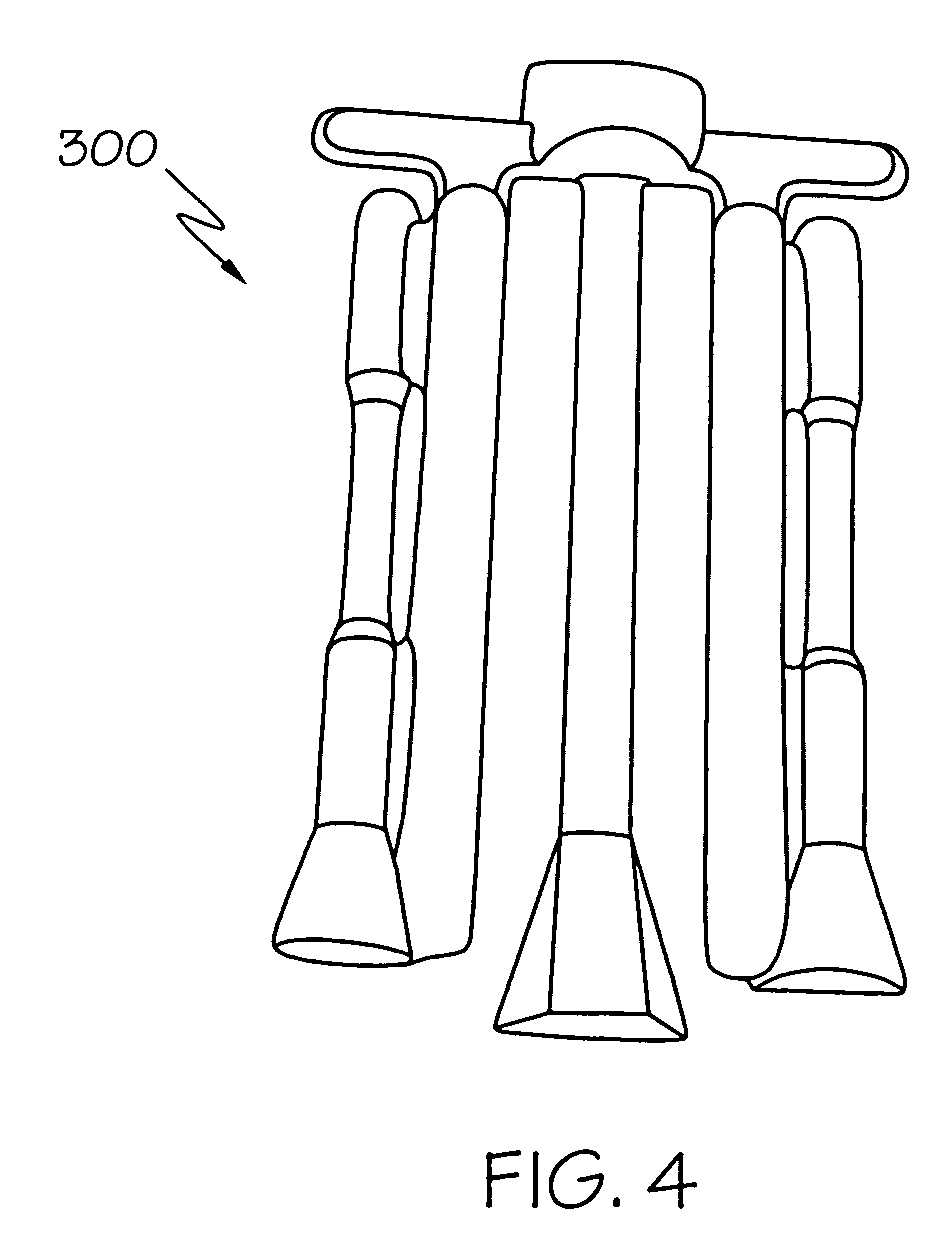Metal treatment to eliminate hot tear defects in low silicon aluminum alloys
a technology of aluminum alloys and metal treatment, which is applied in the field of improving high-strength aluminum base alloys, can solve the problems of insufficient solidification melt strength to withstand, many aluminum alloys such as gm220 are not able to fully realize the efficient, low-cost manufacturing that casting has to offer, and the geometry of the molded part is often limited
- Summary
- Abstract
- Description
- Claims
- Application Information
AI Technical Summary
Benefits of technology
Problems solved by technology
Method used
Image
Examples
Embodiment Construction
[0025]Referring initially to FIGS. 1A and 1B, a cylinder head 1 and a cylinder block 10 for an automotive engine made from the GM220 aluminum alloy is shown. Such devices can be made by casting techniques known to those skilled in the art. For example, cylinder head 1 and block 10 can be made through permanent mold casting. As shown, both the cylinder head 1 and block 10 are cast in the well-known V-6 configuration, although it will be appreciated that other engine configurations are equally applicable. Referring with particularity to FIG. 1A, cylinder head 1 includes intake ports 2, 4 and 6, as well as corresponding exhaust ports (not shown) on the opposite side. Additional components include a timing chain cover 3, spark plug tower 5, valve cover rail 7 and cam carriers 8. Referring with particularity to FIG. 1B, block 10 is secured to the cylinder head 1 of FIG. 1A (such as by bolting). One bank 12 of the block 10 includes three of the cylinders 14, 16 and 18 formed therein. Bolt...
PUM
| Property | Measurement | Unit |
|---|---|---|
| weight percent | aaaaa | aaaaa |
| weight | aaaaa | aaaaa |
| weight percent | aaaaa | aaaaa |
Abstract
Description
Claims
Application Information
 Login to View More
Login to View More - R&D
- Intellectual Property
- Life Sciences
- Materials
- Tech Scout
- Unparalleled Data Quality
- Higher Quality Content
- 60% Fewer Hallucinations
Browse by: Latest US Patents, China's latest patents, Technical Efficacy Thesaurus, Application Domain, Technology Topic, Popular Technical Reports.
© 2025 PatSnap. All rights reserved.Legal|Privacy policy|Modern Slavery Act Transparency Statement|Sitemap|About US| Contact US: help@patsnap.com



